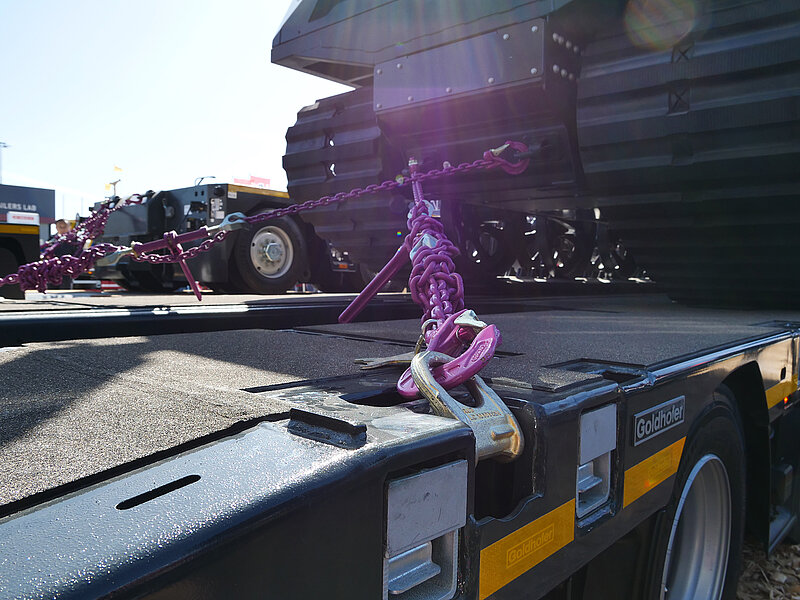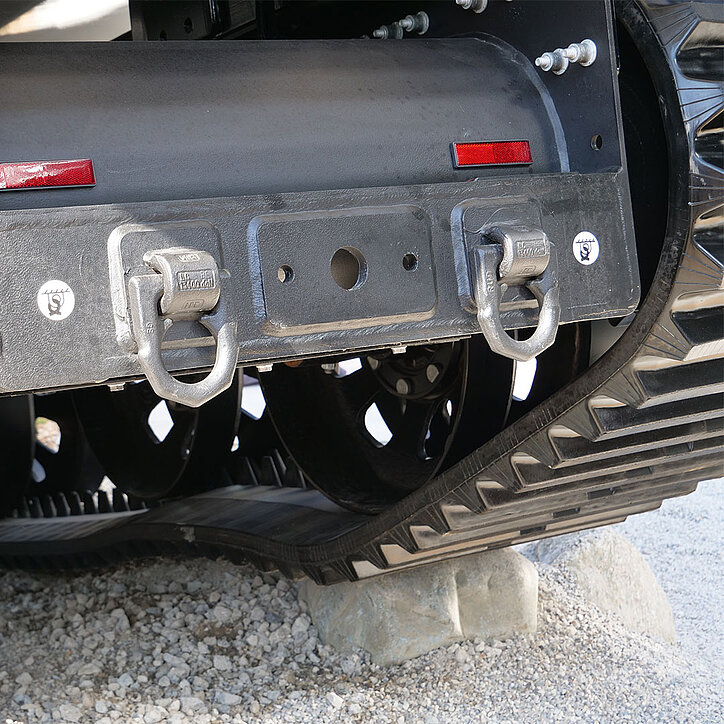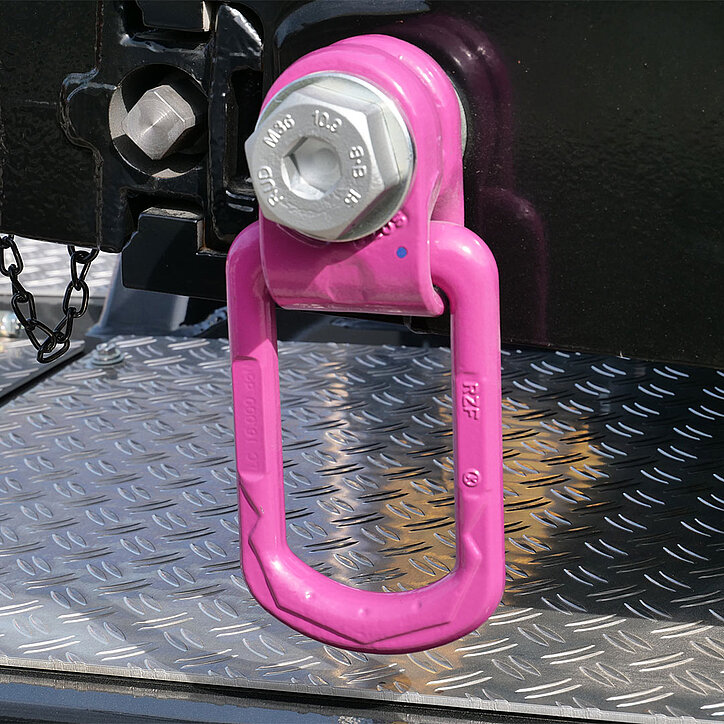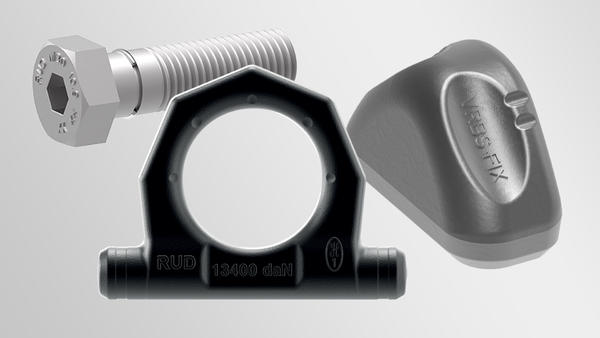RUD lashing points.
This is the best way to secure the load.
During the transportation of heavy machines or components, enormous forces can act on the load. The retention forces required to keep the load on the load bed are transmitted reliably using direct lashing. However, the basic pre-requisite for direct lashing is the existence of lashing points on the load and on the load bed. In other words, correct load securing starts during the design phase and is the responsibility of the design engineer or manufacturer. Weldable RUD lashing points are forged, movable ring eyes made of high-quality alloy steel that are located in bearing blocks that can be easily welded. RUD lashing points with LC specification in daN can also be retrofitted to the vehicle carrier by certified welders. Apart from these weldable lashing points, RUD has a comprehensive range of boltable variants.
Good to know: Since March 2017, ISO 15818 has defined global requirement criteria for lashing points for earth-moving machinery. All RUD lashing points meet these standard requirements.
It all starts with the construction.
Lashing points should …
- be freely accessible;
- have a shape that allows the folding safety catch of the lashing hook to be closed;
- be adapted to the shape of the lashing hooks and not require any additional adapter elements such as shackles;
- guarantee the correct WLL on the connected lashing hook (WLL at the bottom of the hook / no bending load);
- be positioned to make lashing in the direct strand possible – without diverting the lashing means over component edges;


- be positioned to make it possible to maintain reasonable lashing angles – reference value α ; β ≈ 30°;
- be clearly recognisable as such and marked with their lashing capacity;
- be available in sufficient number and lashing capacity;
- be easily replaceable in the event of damage;
- exhibit plastic deformation prior to failure in order to make damage apparent;
- be designed such that the nominal lashing capacity can be applied in all expected loading directions – ideally, they should be able to be loaded on all sides;
- have 2-fold safety against breakage.
Safe bet. The RUD App “Lashing means calculation”.
Would you like to know within a few minutes how to secure your current load ideally? With our free App, you’ll be on the safe side. Just type in the specific facts like mass, lashing methode, transporting goods, inclination angle and friction factor – and you’ll receive a detailed recommendation. Test it now!
Download: Google Play Store Download: App Store
Are lifting points suitable for lashing purposes?
Lifting points originate from lifting technology and are therefore not marked with the permissible tensile force (LC), but with their WLL. In addition, lashing points and lifting points are subject to different safety factors. This is why you will find it easier to meet practical requirements with high-strength, tested RUD lashing points.


RUD weldable Lashing points.
Weldable RUD lashing points are forged, movable ring eyes made of high-quality alloy steel, which are located in bearing blocks that can be easily welded. RUD lashing points with LC specification in daN can also be retrofitted to the vehicle carrier by certified welders.
In addition to these weldable lashing points, RUD also offers an extensive range of boltable variants that can be used for load securing.
Application images of our RUD lashing points.










